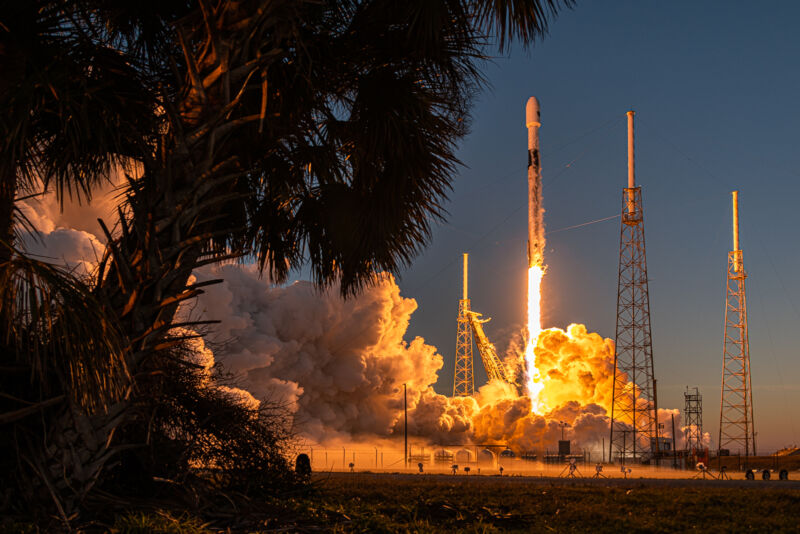
Enlarge / A Falcon 9 rocket launches on Wednesday morning carrying a GPS III satellite into orbit.
Trevor Mahlmann
Welcome to Edition 5.24 of the Rocket Report! I have a blurb about this below, but for me the news of the week is that SpaceX not only launched a Falcon Heavy rocket, but two other Falcon 9 missions on separate coasts as well in just five days. The operational challenges of this are immense and, I think, underappreciated outside of people directly involved in this kind of work.
As always, we welcome reader submissions, and if you don’t want to miss an issue, please subscribe using the box below (the form will not appear on AMP-enabled versions of the site). Each report will include information on small-, medium-, and heavy-lift rockets as well as a quick look ahead at the next three launches on the calendar.

ABL updates on RS1 failure. On Wednesday ABL Space Systems provided an update on the January 10 failure of its RS1 launch vehicle. Long story short, the first stage of the vehicle suffered a “complete loss of power” at 10.87 seconds into flight, leading to a simultaneous shutdown of all nine of the vehicle’s main engines. The rocket impacted the ground about 20 meters from the launch site. “Approximately 95 percent of the vehicle total propellant mass was still onboard, creating an energetic explosion and over-pressure wave that caused damage to nearby equipment and facilities,” the company said.
A fire on board the rocket … The company has begun an anomaly investigation. “There is some visual evidence of fire or smoke near the vehicle QD and the engine bay after liftoff,” ABL wrote. “Shortly before the power loss, a handful of sensors began dropping out sequentially. This evidence suggests that an unwanted fire spread to our avionics system, causing a system-wide failure.” The second RS1 rocket is fully assembled and ready for stage testing, but the results of the anomaly investigation will be needed to inform a timeline for that launch. Kudos to ABL for a transparent and detailed update. (submitted by Ken the Bin)
European reusable rocket CEO criticizes reuse. In an interview with a French television station, the chief executive of Maia Space described the challenges of reusing small rockets. Yohann Leroy explained that while the company was looking at a two-thirds drop in performance when the launcher was recovered, the model would not reduce the cost of the launcher by a similar amount, European Spaceflight reports. “Paradoxically, implementing reuse on a small launcher has rather the consequence of increasing the costs per kilogram launched,” Leroy said.
Zut alors! … The company is a wholly owned subsidiary of ArianeGroup, which manufactures the Ariane fleet of rockets. Leroy made his comments as Maia Space is opening itself up to third-party investors. The company has about 30 employees now and seeks to develop a small reusable rocket before moving on to larger reusable launch vehicles. Leroy may not be wrong about the economics of small launch reuse, but I’m not sure that’s the best pitch—essentially, “Our business is completely unsustainable!”—one might make to potential investors. (submitted by EllPeaTea)
The easiest way to keep up with Eric Berger’s space reporting is to sign up for his newsletter, we’ll collect his stories in your inbox.
Stratolaunch completes second captive-carry flight. This week Stratolaunch announced that its super-sized Roc aircraft had completed a second test flight carrying a Talon-A test vehicle. During the six-hour flight, the aircraft reached a maximum altitude of 22,500 feet, and the team collected information about aerodynamic loads prior to the release point of the Talon-A reusable hypersonic vehicle.
Big plane, little vehicle … This was a test version of the small shuttle-like vehicle. A flight data review will determine the next steps on the test timeline. Stratolaunch said that it continues to progress toward a separation test and its first hypersonic flight of Talon-A 1 within the first half of 2023. That will be something to see. (submitted by Ken the Bin)
Chinese firms to build African spaceport. Groups based in Hong Kong and Shanghai have reached a memorandum of understanding with the government of Djibouti to build a $1 billion commercial spaceport on the Horn of Africa, Parabolic Arc reports. The Djiboutian Spaceport, which will be constructed in the northern Obock region near the entrance to the Red Sea, would be the first orbital spaceport in Africa. It is thought to comprise an area of 10 square kilometers.
Not without geopolitical implications … According to the report, construction of the spaceport is expected to begin after the parties sign a formal agreement in March. The project is expected to take five years. This will be a development worth following, as it is easy to understand the interest of Chinese companies in launching from a latitude about 10 degrees north of the equator. China’s rivals, however, also have interests in Djibouti. The US Navy operates Camp Lemonnier nearby, which is the only permanent US military base in Africa. France has a large military base in the country as well.

